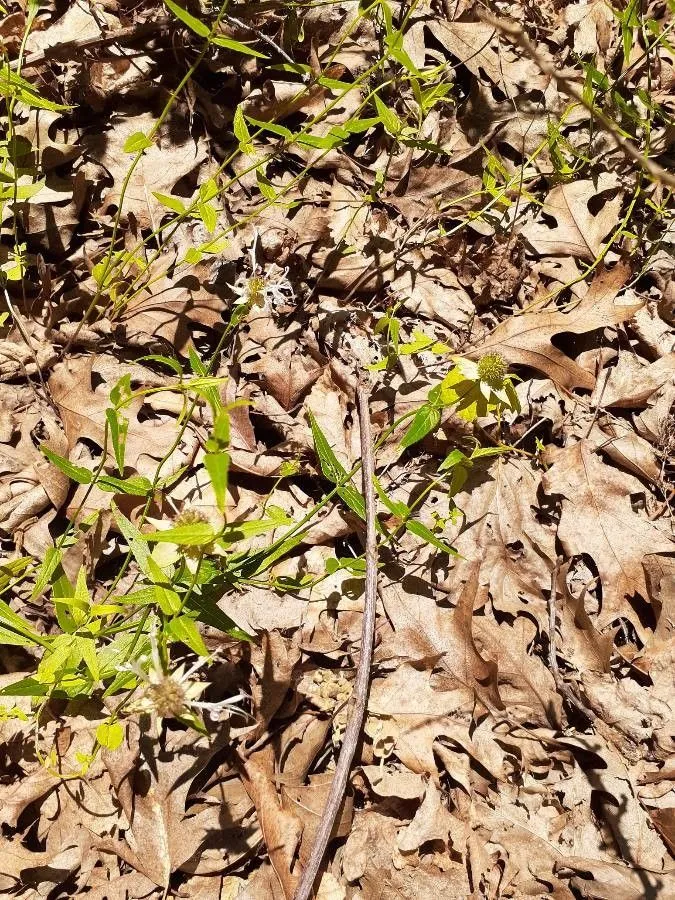
Author: L.
Bibliography: Sp. Pl.: 22 (1753)
Year: 1753
Status: accepted
Rank: species
Genus: Monarda
Vegetable: False
Observations: EC. & E. U.S.A.
Basil beebalm, scientifically known as Monarda clinopodia, is a captivating perennial herb that belongs to the Lamiaceae family. Native to the eastern and central regions of the United States, this plant is well-adapted to a variety of habitats, thriving in rich woodlands, meadows, and along streams.
Characterized by its distinctive, aromatic foliage, basil beebalm is recognizable by the whorls of tubular, pale to creamy-white flowers that bloom atop its square, sturdy stems. The flowering period typically spans from early to late summer, attracting an array of pollinators, particularly bees, butterflies, and hummingbirds, all drawn to its nectar-laden blossoms.
The foliage of basil beebalm is lance-shaped, exhibiting a slightly hairy texture that releases a minty aroma when crushed, a trait common to many members of the Lamiaceae family. This scent not only makes it a delightful addition to gardens but also helps deter pests, making it a favored plant for eco-friendly gardening.
In addition to its ornamental value, Monarda clinopodia has a rich history of use in traditional medicine. Indigenous peoples and early settlers often utilized its leaves and flowers for their purported medicinal properties, concocting teas to treat ailments such as fevers, colds, and digestive issues.
Cultivating basil beebalm in a home garden is relatively straightforward, provided the plant is given a location that mimics its natural habitat. It flourishes in well-drained soil with adequate moisture and benefits from full to partial sunlight. Gardeners prize basil beebalm not only for its beauty and ecological benefits but also for its low-maintenance nature once established.
The plant’s bibliographic reference can be traced back to “Species Plantarum” (1753) by Carl Linnaeus, where it was scientifically described and named. Over the centuries, basil beebalm has remained a beloved species among botanists and gardening enthusiasts alike, cherished for its resilience, versatility, and contribution to biodiversity.
Eng: basil beebalm, beebalm, white bergamot, wild bergamot
En: Basil beebalm, Beebalm, Wild bergamot, White bergamot
Taken Jul 16, 2015 by EOL − bendingtree (cc-by-nc)
Taken Jun 2, 2020 by Aaron Harp (cc-by-sa)
Taken Jun 2, 2020 by Aaron Harp (cc-by-sa)
Taken Jun 2, 2020 by Aaron Harp (cc-by-sa)
Taken Jun 2, 2020 by Aaron Harp (cc-by-sa)
Taken May 20, 2020 by Aaron Harp (cc-by-sa)
Taken Jul 3, 2020 by Stanley Chin (cc-by-sa)
Taken Apr 22, 2020 by Gayle Judkins (cc-by-sa)
Taken Jun 2, 2020 by Aaron Harp (cc-by-sa)
Taken Jun 2, 2020 by Aaron Harp (cc-by-sa)
Taken Jul 29, 2015 by EOL − Dan Nydick (cc-by-nc)
Taken May 20, 2020 by Aaron Harp (cc-by-sa)
Taken Jan 1, 1900 by EOL − WVU Herbarium (cc-by-nc-sa)
Taken Jun 2, 2020 by Aaron Harp (cc-by-sa)
Taken Jun 2, 2020 by Aaron Harp (cc-by-sa)
Growth habit>: Forb/herb
Family: Myrtaceae Author: (F.Muell.) K.D.Hill & L.A.S.Johnson Bibliography: Telopea 6: 402 (1995) Year: 1995 Status:…
Family: Rubiaceae Author: Pierre ex A.Froehner Bibliography: Notizbl. Bot. Gart. Berlin-Dahlem 1: 237 (1897) Year:…
Family: Sapindaceae Author: Koidz. Bibliography: J. Coll. Sci. Imp. Univ. Tokyo 32(1): 38 (1911) Year:…
Family: Asteraceae Author: A.Gray Bibliography: Pacif. Railr. Rep.: 107 (1857) Year: 1857 Status: accepted Rank:…
Family: Fabaceae Author: Medik. Bibliography: Vorles. Churpfälz. Phys.-Ökon. Ges. 2: 398 (1787) Year: 1787 Status:…
Family: Aspleniaceae Author: (Cav.) Alston Bibliography: Bull. Misc. Inform. Kew 1932: 309 (1932) Year: 1932…